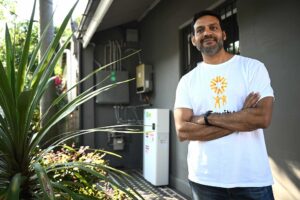Despite all the headlines, Australia’s main grids have dodged what mainstream media has erroneously described as predicted “blackouts” in the last week, but the Australian Energy Market Operator is increasingly concerned by the extended outages at nearly half the coal units in the country’s biggest grid in NSW.
AEMO has warned of supply pressures in both NSW and Queensland this week, the two Australian states most heavily dependent on ageing coal fired generators, or what some people still laughingly describe as “always on” baseload power.
The NSW grid is currently missing four of its 12 coal units – two at Bayswater, one at the country’s biggest coal fired power station at Eraring, and one at Vales Point. Add the outage at the Tallawarra A combined cycle gas-fired power station, and the state is missing more than 3 gigawatts of so-called “baseload” fossil fuel supplies.
Multiple outages in Queensland, including at the country’s biggest and most modern “baseload” coal unit at Kogan Creek, have also put that grid under stress in the latest heatwave, although AEMO is confident that situation can be managed.
In NSW however, it has issued yet another LOR3 (lack of reserve) warning, and promptly cancelled it after the anticipated response for the market. If an LOR3 does actually eventuate, it will result in some “load shedding” to match demand with available capacity.
AEMO is confident that it will avoid any outages because it can draw on various resources such as demand response and ceasing some non-essential network repairs – but it may struggle if another big fossil fuel generator fails in the expected hot conditions.
“We are experiencing some quite unseasonable hot weather here in NSW today, and effectively that is a summer heat wave while we’re still here in spring,” AEMO chief executive Daniel Westerman told reporters at a hastily convened media conference at Canberra Airport on Tuesday.
“That, combined with a number of major generation units that are on outage, both due to planned and unplanned maintenance, is causing tightness in electricity supply here in New South Wales, both today and tomorrow.”
Westerman says AEMO has issued notices to generators and to transmission companies to bring back to service all the generators that are potentially available and to restore transmission lines. This includes a key line linking Queensland and NSW.
“So look at this stage, while conditions are tight in NSW due to the weather and those outages, there is sufficient generation available to meet demand, both today and our focus is very much on working with industry and governments to ensure that sufficient generation is available to meet energy needs over the coming few days,” Westerman said.
The situation in NSW has worsened because of the failure of Origin Energy to bring one of its 720 MW units at Eraring back on line as expected. The unit is now scheduled to return on Friday, after the worst of the heatwave is over, but leaves the grid particularly vulnerable in the meantime.
It’s ironic because Origin has recently sealed an underwriting deal worth up to $450 million with the NSW government to keep the Eraring coal fired power station open for at least another two years – even though AEMO has repeatedly warned that managing the country’s ageing and increasingly unreliable coal fired power stations is it biggest challenge.
The situation emerges at a critical time for Australia, with the federal Coalition saying it wants to extend the life of ageing coal generators in the hope they can stay operating until it can Australia can develop the resources to build nuclear reactors, which most credible analysts say will be at least 20 years away.
The federal government, and most state governments, are pushing for a rapid transition to renewables, following AEMO’s Integrated System Plan which plots a roadmap that takes the grid beyond coal and identifies renewables and storage and other dispatchable generation as the cleanest, cheapest and most reliable alternative.
What’s particularly ironic about the latest situation is that – should the Coalition win power and build its planned gigawatt scale nuclear plants, the number of LOR (lack of reserve) notices will likely multiply.
That’s because the LOR notices are based on the ability of AEMO to cover the loss of one or two of the biggest generation units in the state. The bigger the generation unit, the more reserve or back up it needs to ensure the lights stay on.
It should be noted that the recently connected nuclear power station in Finland has experienced multiple outages since starting operations last year, including just last week and an unplanned two month outage in May.
Ontario’s nuclear fleet, often touted as the framework for the Coalition’s nuclear plans, will see each of its nuclear power plants off line for at least three years each over the rest of the decade for refurbishment, prompting the grid operator there to commission some of the world’s biggest batteries, and more back up power.








